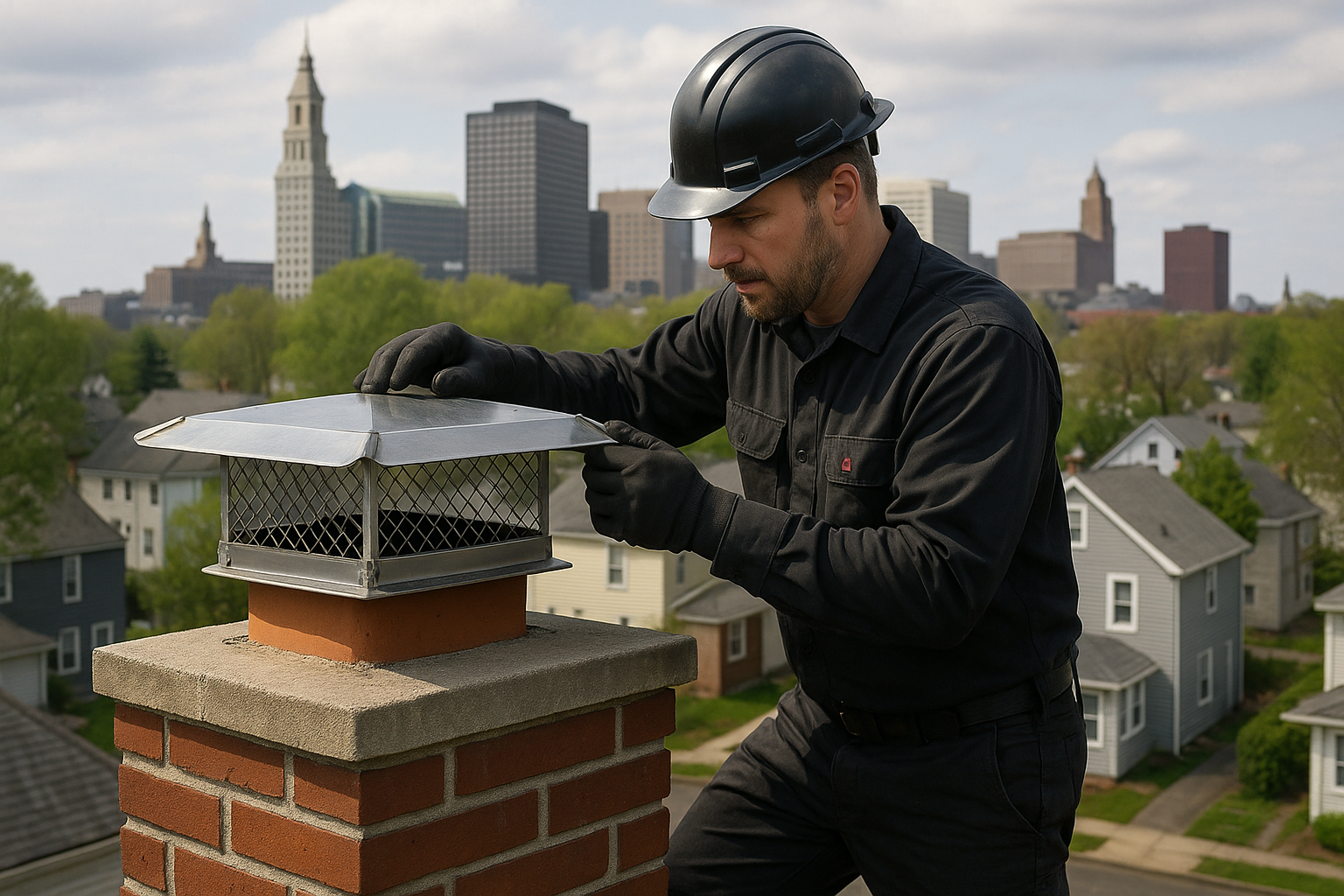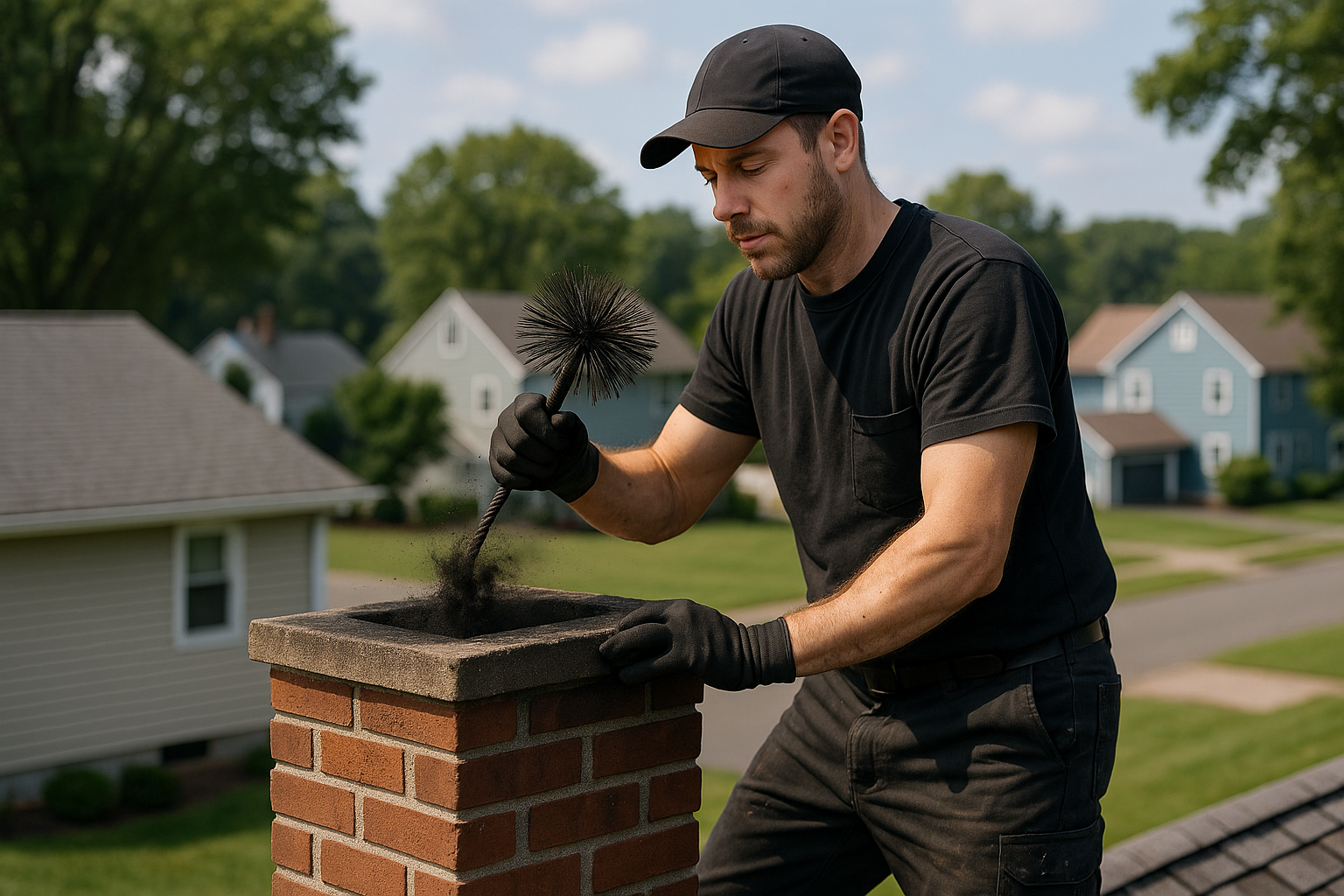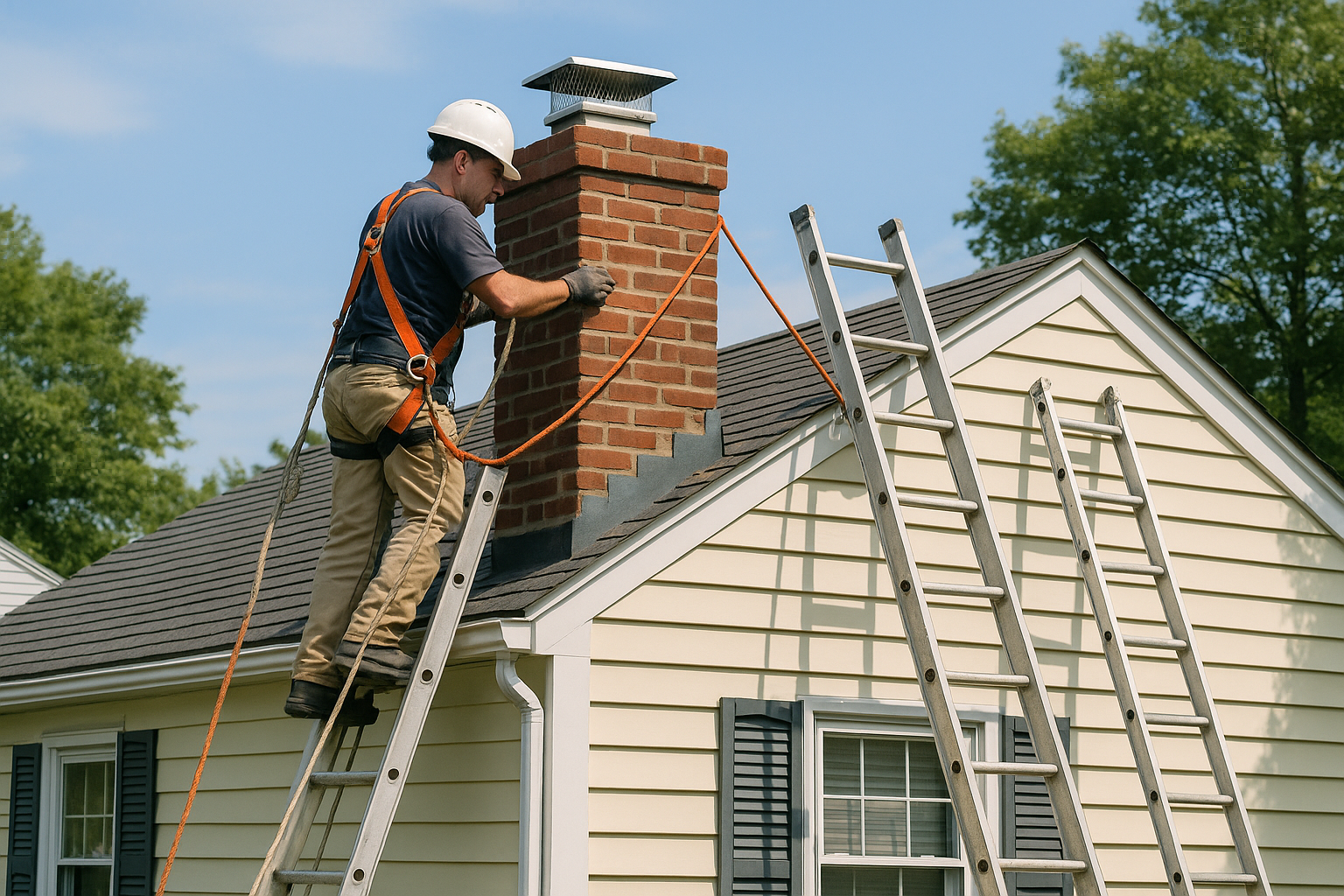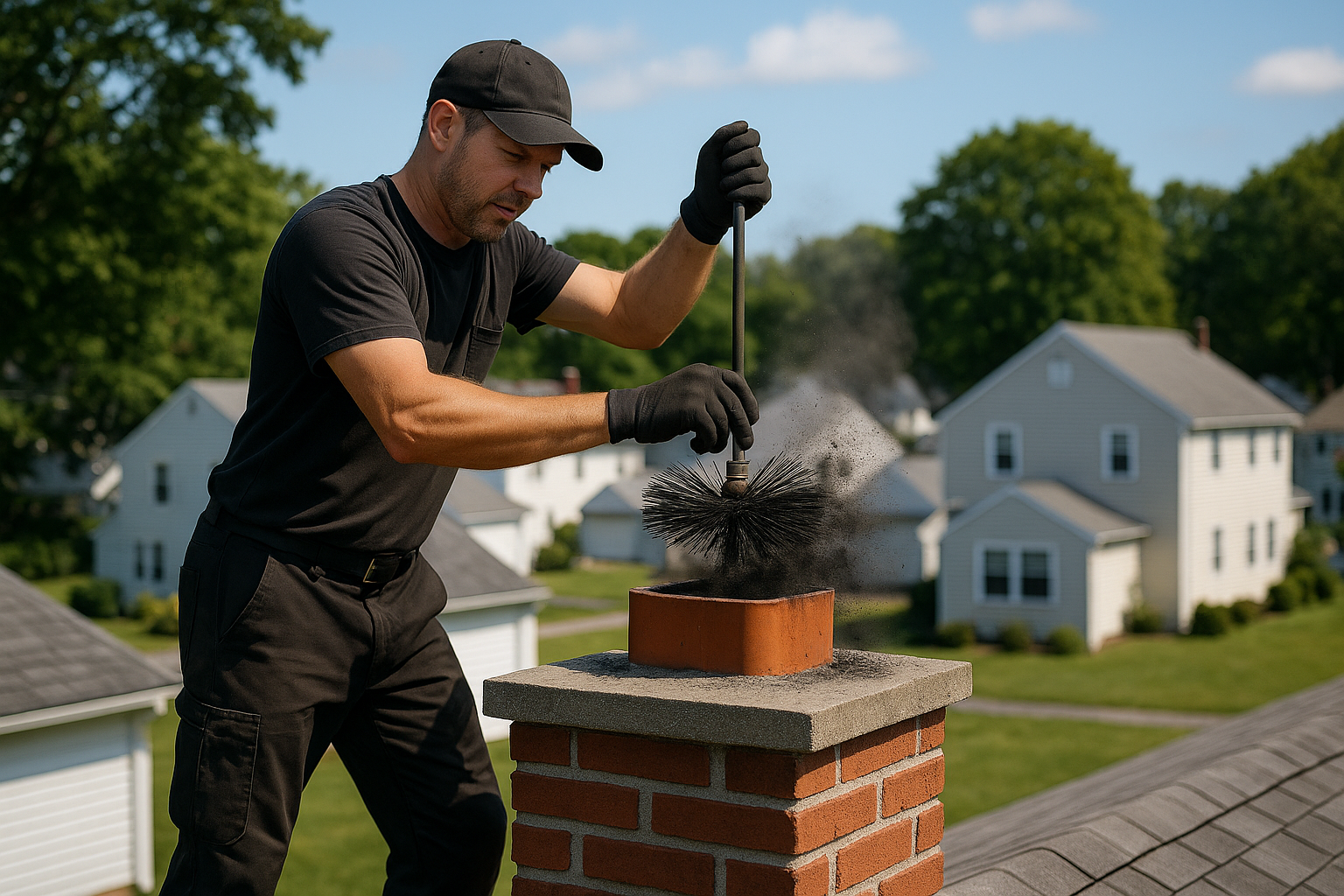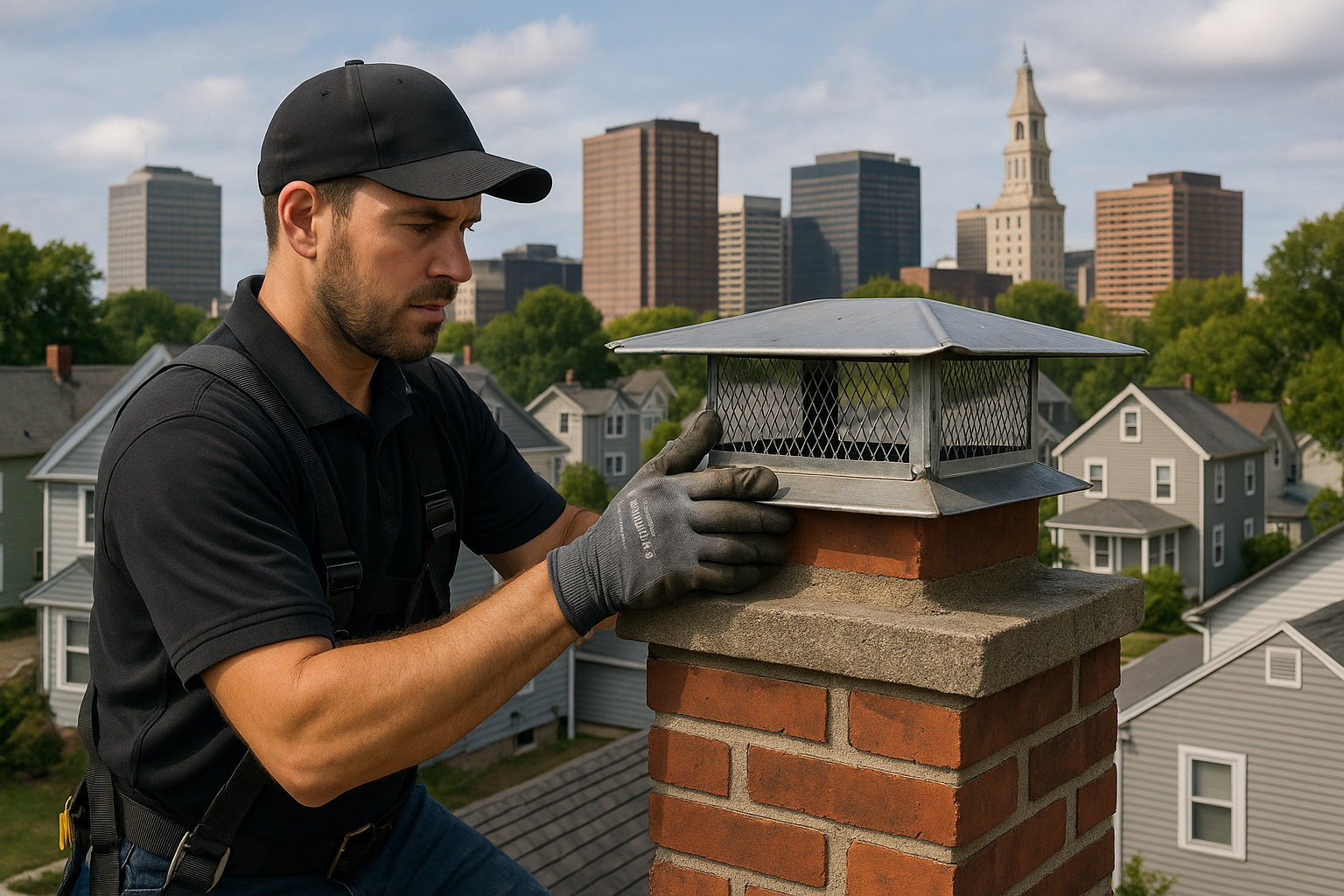
Chimney Liner Installation in Meriden, CT
Safely vent wood, gas, pellet, and oil appliances with properly sized stainless steel liners. Fix draft problems, protect masonry, and boost efficiency—done right the first time.
Get a Liner QuoteWhy Relining Matters
The flue liner is your chimney’s most important safety component. It contains heat, channels combustion byproducts outdoors, and protects masonry from corrosive gases and moisture. Over time, clay flue tiles can crack or separate, mortar joints can open up, and older chimneys may not be sized for modern appliances. Any of these issues can lead to draft problems, smoke spillage, carbon monoxide risk, or accelerated masonry deterioration.
Meriden Chimney & Fireplace Pros installs high-quality stainless steel liners sized to your appliance and venting requirements. We measure, design, and install systems for wood fireplaces and inserts, wood stoves, pellet stoves, gas logs/inserts, and oil/gas furnaces or boilers. The right liner restores draft, improves efficiency, and extends the life of your chimney—especially important in Connecticut’s wet winters and freeze–thaw cycles.
Every project is photo-documented and, when appropriate, camera-verified before and after installation. You’ll get a clear explanation of your options and a practical plan that fits your home and budget.
Quick Info
- Service: Chimney Liner Installation – Meriden, CT
- Phone: (203) 884-8005
- Email: info@meridenchimneyfireplacepros.com
- Fuel Types: Wood, pellet, gas, oil
- Deliverables: Size calculations, materials, install, and photo report
Common Reasons to Reline a Chimney
Cracked or Missing Flue Tiles
Gaps and fractures allow heat and gases to reach the masonry structure. A continuous stainless steel liner restores a sealed, safe vent path.
After a Chimney Fire
High temperatures can crack tiles and damage mortar bonds. A new liner ensures safe operation going forward and often accompanies other repairs.
Appliance Conversion
Switching from wood to gas, adding an insert, or connecting a furnace/boiler requires proper liner sizing and materials for the new exhaust profile.
Moisture & Condensation Damage
Cool flues, oversized chimneys, and gas appliances can create acidic condensate that erodes masonry. Stainless liners resist corrosion and protect the stack.
Draft Problems & Smoke Spillage
Undersized/oversized flues or rough interiors hinder draft. A correctly sized liner improves airflow so fires light easier and burn cleaner.
Historic or Unlined Chimneys
Older homes may lack a proper liner. Stainless relining adds a modern safety barrier while preserving the original brickwork’s look.
Energy & Performance Upgrades
A smooth, properly sized stainless path can reduce creosote, improve heat output, and stabilize draft in shoulder seasons.
Insurance/Real-Estate Requirements
Home sales and coverage renewals may require documented repairs or relining to bring the system up to current safety expectations.
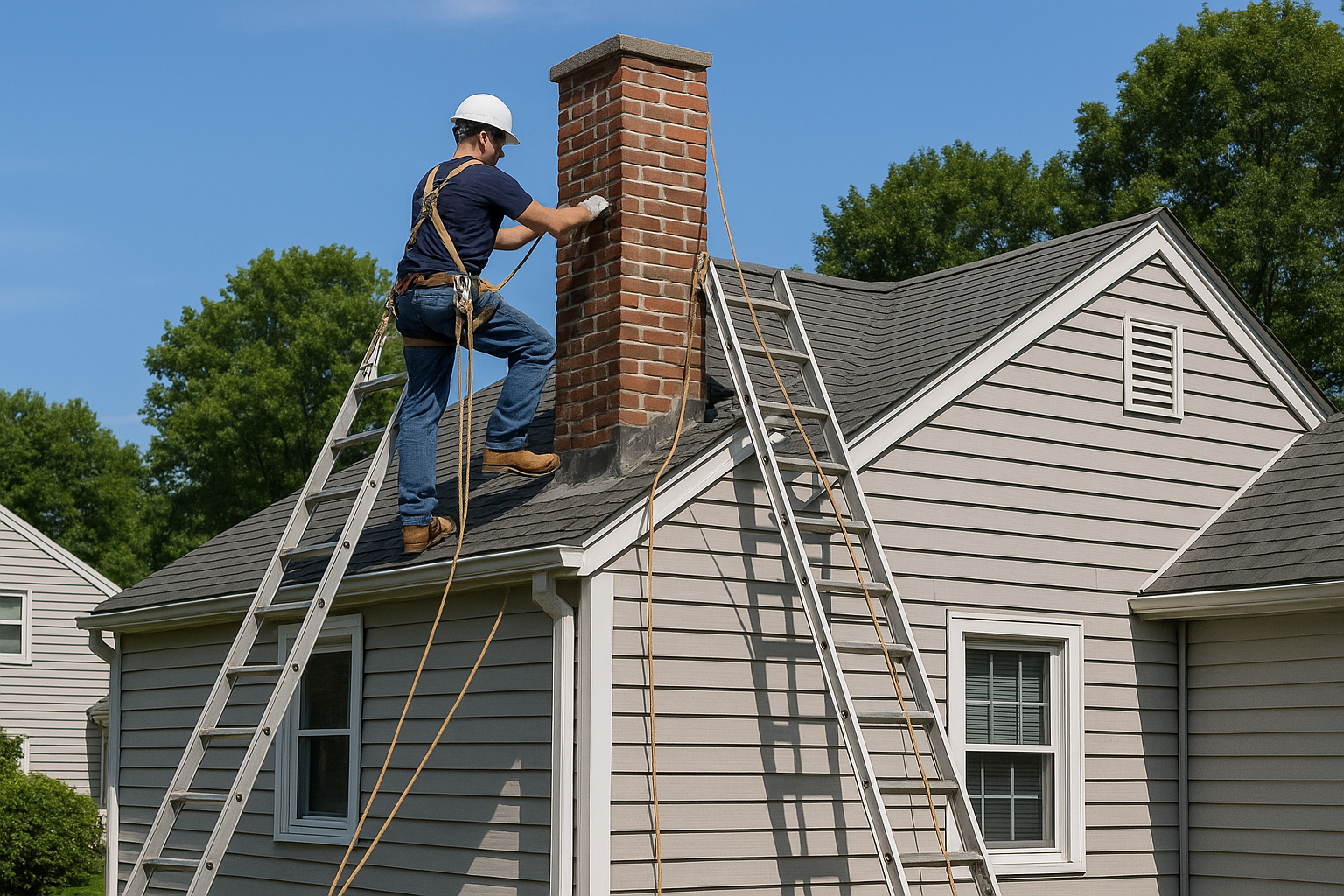
Stainless Steel Liners: Built for New England
We install stainless steel liners because they’re durable, versatile, and compatible with nearly every fuel type common in Meriden homes. The key is choosing the right alloy and design for your appliance and venting needs.
- 316/316Ti: Excellent corrosion resistance for wood, pellet, oil, and most gas appliances.
- 304: Suitable for many wood and some gas applications where corrosive condensates are less likely.
- Rigid vs. Flex: Rigid provides the smoothest interior for straight flues; flexible navigates offsets and is ideal for many retrofits.
- Insulation: Wrapped or poured insulation improves draft, keeps flue gases hotter, and reduces creosote—especially important for exterior chimneys.
- Proper Sizing: We calculate diameter and cross-section based on appliance output, connector size, height, and flue configuration to maintain safe, reliable draft.
Our Installation Process
1) Camera Assessment & Measurements
We begin with a visual and camera inspection to document flue condition, measure height, check for offsets, and confirm the best installation path. We also examine the crown, cap, and masonry for issues that should be addressed during the project.
2) Design & Material Selection
We select the correct stainless alloy, liner type (rigid/flex), diameter, and insulation package based on your appliance, fuel type, and chimney location (interior vs. exterior). We’ll review options and explain the tradeoffs so you can decide confidently.
3) Prep & Protection
Drop cloths, sealed vacuums, and dust containment protect your home. On the roof, we set safe access and staging. If needed, we remove obstructions and address minor crown openings before pulling the liner.
4) Liner Install & Insulation
The liner is fed from the top or bottom (or both on tall stacks), connected to an appliance-specific adapter, and insulated by wrap or pour-in material as specified. We center and support the liner to keep clearances consistent.
5) Termination, Cap & Seal
We install a top plate and storm collar, then a properly sized stainless cap. Penetrations are sealed, and any crown repairs or waterproofing are completed to keep water out.
6) Commissioning & Documentation
We verify draft, check connections, and ensure the appliance operates as expected. You’ll receive photos of the install, plus care tips and a maintenance cadence for long life.
Lining for Different Appliances
Wood Fireplaces & Inserts
Open fireplaces often have large, masonry flues that are inefficient and hard to keep warm. When adding a wood insert, we size the stainless liner to the insert’s outlet so it drafts strongly and reduces creosote. For open fireplaces, a dedicated stainless flue with proper cap and crown repairs improves performance and rain protection.
Wood Stoves
Stoves depend on steady draft to regulate burn rates. A right-sized, insulated liner stabilizes draft in Meriden’s shoulder seasons and keeps performance predictable during snow and wind events.
Pellet Stoves
Pellet exhaust is cooler and can condense. Stainless liners with proper diameter and clean terminations prevent ash accumulation and keep sensors and igniters happier over time.
Gas Logs & Gas Inserts
Gas produces moisture and can create acidic condensate in cool masonry flues. Stainless liners sized to the appliance prevent condensation damage and maintain reliable ignition and flame appearance.
Oil & Gas Furnaces/Boilers
Older homes sometimes vent appliances through large, unlined chimneys. Relining improves draft, reduces condensation, and protects masonry. We coordinate with HVAC pros when needed for safe, code-aware transitions.
Shared Chimneys
Some stacks contain multiple flues. We verify each appliance has its own properly sized liner and clearly marked termination with the right cap to avoid cross-drafting or spillback.
Care Tips for a Long-Lasting Liner
- Schedule annual inspections and sweeps appropriate to your fuel and usage.
- Burn properly seasoned hardwood; avoid smoldering and trash burning.
- Keep a well-seated chimney cap to block rain, animals, and debris.
- Promptly address water entry at crowns and flashing to protect insulation.
- If odors appear in humid weather, ask about top-sealing dampers and draft improvements.
- After storms, visually check the cap and termination from the ground.
- If you upgrade appliances, confirm liner sizing before reconnecting.
- Avoid harsh chemical cleaners that can attack stainless; use approved methods.
- Ask us to store your job photos; they help with future maintenance and resale.
Chimney Liner FAQs
Related Services
Keep Your System Safe, Efficient & Leak-Free
Get a Chimney Liner Installed in Meriden, CT
Restore safety, draft, and performance with a properly sized stainless steel liner. Call (203) 884-8005 or send us a message for a camera-documented assessment and clear options.

